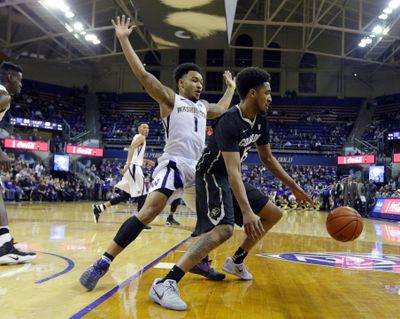Huskies among few Pac-12 teams to increase attendance; Cougars have mixed results

SEATTLE – In a season in which they will almost certainly win fewer league games than any team Lorenzo Romar has ever coached, a funny thing is happening at Washington Huskies home games.
People are attending them.
Three Pac-12 programs have seen a significant increase in home attendance this season: UCLA, which possesses a 23-3 record and is ranked No. 6 in the country; Oregon, which is 22-4 and ranked No. 7; and, to a smaller degree, Washington, which is 9-17 overall and 2-12 in league play and has lost eight consecutive games.
Washington State is a bit of an anomaly. The Cougars are averaging 2,635 for the season, down from 2,857 last year. However, attendance in conference games has risen to 3,218 this season, up from 2,982.
Arizona State has seen a more modest increase of 63 fans per game. Every other conference team lists an average attendance lower than what it was a year ago (even Arizona, which regularly sells out the 14,545-seat McKale Center, is averaging 150 fewer fans per game this season).
The Huskies drew an average of 6,785 fans per home game last season, when they won 19 games and played in the National Invitation Tournament. This year, despite owning a far worse record, they’re averaging 7,614 for a per-game increase of 829. That figure includes a sellout of their Feb. 4 loss to UCLA – the first sellout at Hec Edmundson Pavilion since the 2011-12 season – and the school is expecting another sellout, or at least close to it, for the Huskies’ home finale at 5 p.m. Saturday against No. 5 Arizona.
UCLA’s attendance is up from 8,073 last year to 10,652 this year, and Oregon is up from 7,467 to 9,740.
So, how are the Huskies doing it? It doesn’t hurt that in spite of their record, star freshman guard Markelle Fultz is leading the league in scoring and is projected as the No. 1 pick in this year’s NBA draft. No matter how bad the Huskies have played as a team, Fultz’s presence will always be a draw.
“I’m sure Markelle helps with that,” UW coach Lorenzo Romar said.
But Roy Shick, UW’s senior associate athletic director for external affairs, says the increase might also be due to more strategic – and successful – marketing efforts.
For example, Shick, who was hired in July by athletic director Jen Cohen, said the school sold about 550 more partial-plan packages than it did last year. Included among those options: a half-game plan that focused on weekend games – selling tickets to 8 p.m. weekday games remains a riddle for most everyone, Shick said – a six-game plan that focused on “big games,” and a few “pick ‘em” plans, too.